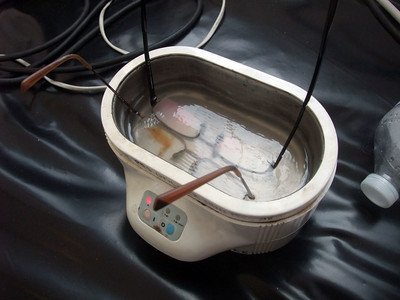There’s nothing quite like the crackling sound of a wood fire on a cold evening. It warms your home, but it also warms your soul. Yet, not all firewood is created equal. Some woods burn hotter, some longer, and others add an enchanting aroma to the room. If you’ve ever stood in a forest wondering which log will make the best fire, you’re in the right place.
Let’s dive into the top 10 options of firewood, ranked by heat output and burn quality, with insights to help you make the perfect choice for your fireplace or wood stove.
1. Oak: The Steady Performer
When it comes to firewood, oak is the gold standard. Its dense fibers make it a slow-burning wood, releasing a steady and intense heat that lasts for hours. Oak is perfect for those long winter nights when you want the fire to keep going without constant tending.
One caveat: oak requires patience. It takes about two years to properly season, but once it’s ready, it’s like the marathon runner of firewood. Its low moisture content when seasoned means less smoke and cleaner air in your home. Plus, there’s something satisfying about the rich, earthy scent it emits as it burns. The steady crackle of oak in the hearth feels like the embodiment of comfort—dependable, hearty, and timeless. Read More..
2. Hickory: The Heat Beast
Hickory is the heavyweight champion of heat. If you’re looking for firewood that produces a high BTU output and burns hot and long, hickory is your best bet. It’s so efficient that even a smaller log of hickory can outperform larger pieces of softer woods.
But that’s not all. Hickory has a distinctive, nutty aroma that’s often used in smoking meats. Imagine sitting by your fire while the sweet, smoky scent fills the room—it’s a feast for the senses. Hickory also produces a lively, vibrant flame, making it as visually captivating as it is practical. It’s the firewood equivalent of an overachiever, excelling in every category. Read More..
3. Maple: The Sweetheart of Firewood
Maple doesn’t just produce maple syrup; it’s also a fantastic firewood choice. Hard maple varieties, like sugar maple, burn with a strong, steady flame and provide good heat output. The wood is dense, making it a long-lasting option.
One thing that sets maple apart is its pleasant scent. The subtle sweetness it releases as it burns can make any room feel cozy and inviting. If you’re new to wood-burning, maple is forgiving and easy to manage. Its smooth, clean burn also means you’ll spend less time worrying about soot buildup and more time enjoying the ambiance it creates. Read More..
4. Birch: The Fast Burner with a Show
Birch firewood has a lot going for it. First, it’s beautiful—the iconic white bark is a decorator’s dream, even before it makes its way to the fireplace. But birch isn’t just about looks; it burns hot and quickly, making it ideal for a quick burst of heat.
Its thin bark can even be used as a natural fire starter. However, birch isn’t as long-lasting as oak or hickory, so you’ll need to keep adding logs to maintain the heat. Still, it’s a great option for those who love a bright, lively fire. And there’s something magical about watching its bark peel away in the flames, adding an extra visual dimension to the fire’s charm. Read More..
5. Cherry: The Aromatic Artist
Cherry wood is like the perfumer of the firewood world. When it burns, it releases a delightful, fruity aroma that can transform any space into a cozy retreat. It’s not just about the scent, though—cherry also produces a moderate amount of heat and burns cleanly, with minimal smoke.
Cherry wood is easier to split than denser woods like oak, making it a favorite for those who prefer low-maintenance firewood. It also seasons relatively quickly, usually within a year. The rich, reddish hue of cherry logs adds an aesthetic touch to your woodpile, making even the storage process feel elegant. Read More..
6. Ash: The All-Around Player
Ash is often considered the all-purpose firewood. It burns hot and steady, even if it’s not perfectly seasoned. That’s a huge plus for those who might not have the time to wait two years for their wood to season properly.
Ash splits easily, which means less time and effort prepping it for your fire. Its clean burn and moderate smoke output make it an excellent choice for indoor fireplaces. And while it might not have the show-stopping qualities of cherry or hickory, ash’s reliability and versatility make it the dependable friend you can always count on. Read More..
7. Beech: The Quiet Overachiever
Beech wood might not get as much attention as oak or hickory, but it’s a solid contender. It burns hot and provides a consistent heat that’s perfect for long winter evenings. The smooth bark is a visual treat, and it splits easily when properly dried.
Beech does take time to season, so patience is key. But once seasoned, it’s a reliable and high-performing firewood option. Its understated efficiency makes it an unsung hero among firewood types—a quiet achiever that delivers warmth without demanding the spotlight. Read More..
8. Pine: The Quick Igniter
Pine is often debated in firewood circles. While it’s not ideal for long-burning fires due to its lower density and high sap content, pine has its place. Its quick ignition makes it an excellent kindling wood, and its resin-rich logs can create a bright, crackling fire.
The downside? Pine tends to produce more creosote, which can build up in chimneys and require regular cleaning. Use it in moderation and enjoy its delightful, campfire-like scent. Pine is perfect for creating a nostalgic, outdoorsy vibe—just keep your chimney brush handy. Read More..
9. Walnut: The Subtle Sophisticate
Walnut wood brings a touch of elegance to your firewood selection. It’s not as hot-burning as oak or hickory, but it provides a steady, medium heat that’s perfect for mild winter nights.
Its dark wood adds a rustic aesthetic to your woodpile, and the mild aroma it produces is a lovely bonus. Walnut seasons relatively quickly, so you won’t have to wait long to enjoy its benefits. There’s something inherently calming about the soft crackle of walnut in the fire, making it a great choice for those quiet, reflective evenings. Read More..
10. Poplar: The Budget-Friendly Option
Poplar is often overlooked, but it has its advantages. It’s lightweight and easy to split, making it beginner-friendly. While it doesn’t burn as hot or long as denser woods, it’s a good option for milder climates or daytime fires when you don’t need prolonged heat.
Poplar’s quick ignition makes it a convenient choice for getting a fire started. Just be prepared to replenish the fire more often than with other woods. Despite its modest qualities, poplar holds a charm of its own, offering a flickering warmth that’s perfect for a casual, relaxed setting. Read More..
Final Thoughts
Choosing the right firewood isn’t just about heat output; it’s about creating an experience. Whether you prefer the steady burn of oak, the aromatic allure of cherry, or the quick warmth of birch, each wood has its personality. A fire is more than a source of heat—it’s a centerpiece for memories, a backdrop for stories, and a comfort on the coldest nights. Next time you build a fire, think about what kind of ambiance you want to create. And remember, the best fires are the ones shared with family, friends, and maybe a cup of hot cocoa in hand.
Happy burning!



